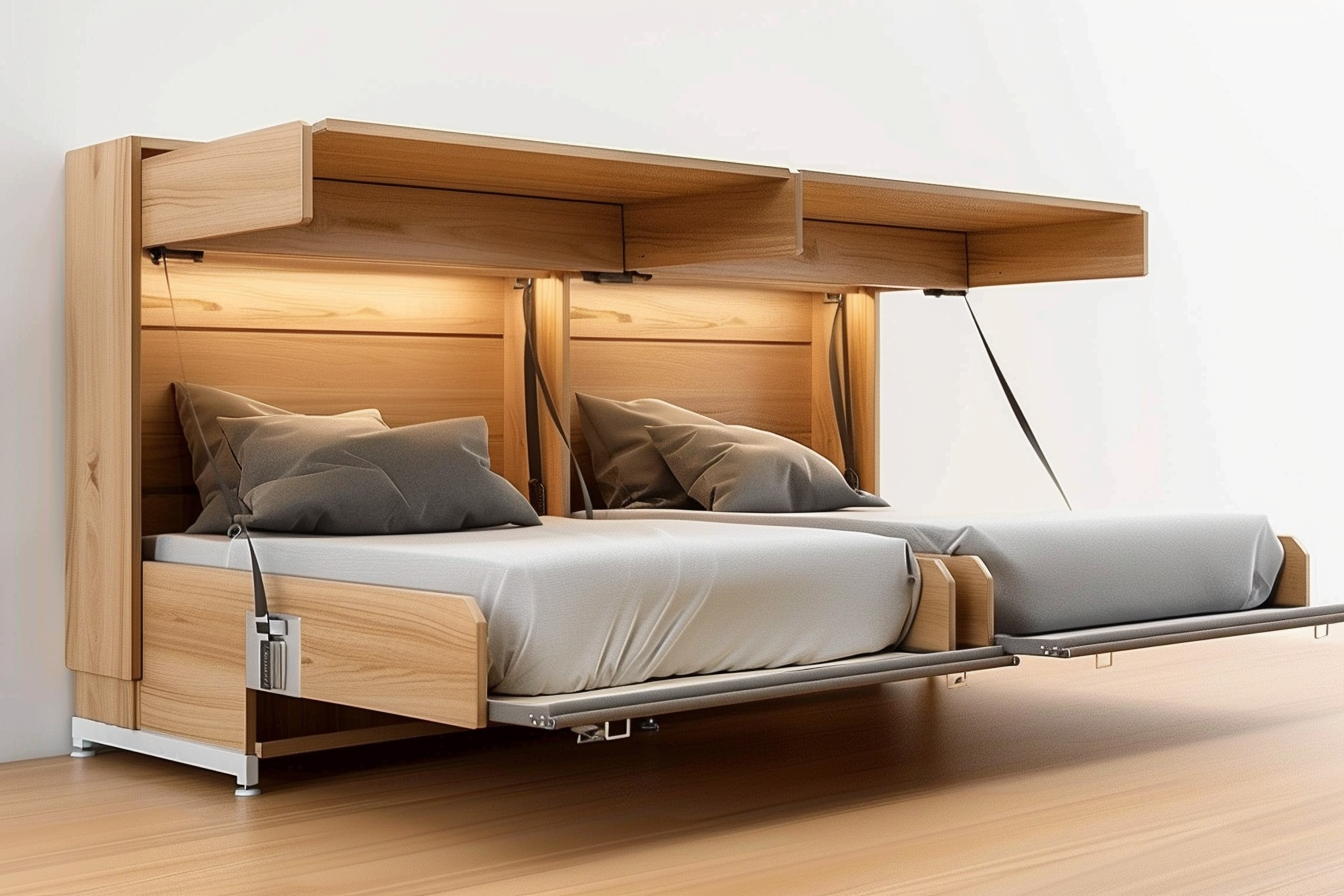Space-Saving Bunk Beds: Smart Sleep & Storage
Bunk beds are no longer just a basic way to save floor space — they’ve become versatile furniture solutions that blend safety, durability, and style. Whether you’re outfitting a kids’ room, a guest suite, or a vacation rental, this guide covers safety features, materials, layouts, pricing, and financing to help you choose the right bunk bed for your home.

Space-Saving Bunk Beds: Smart Sleep & Storage
Essential safety features to prioritize
Safety should be the top consideration when choosing a bunk bed. Modern designs incorporate several important protections: guardrails that rise at least 5 inches above the mattress surface on all exposed sides; strong, slip-resistant ladders or staircases; and well-designed openings between slats to prevent entrapment. Check that rails, ladders, and fasteners are firmly attached and that the overall frame meets current safety standards. Additionally, verify weight limits for both upper and lower bunks and choose a mattress thickness that keeps the top sleeping surface well below the guardrail’s top edge.
Maximizing space and organizing small rooms
The main appeal of bunk beds is how they free up square footage. By stacking beds vertically, you reclaim floor space for desks, play areas, or storage. Many models are engineered to do double duty: loft-style units create an office or play zone beneath the upper bunk, while L-shaped and captain’s bunk designs include built-in drawers, shelving, or a desk. When planning a room layout, measure ceiling height, door clearance, and the planned mattress thickness so the top bunk isn’t cramped. Think about traffic flow and lighting — integrating reading lights or under-loft task lighting can make the space more functional without taking additional room.
Materials, construction, and longevity
The lifespan and feel of a bunk bed largely depend on its materials and craftsmanship. Solid wood frames are prized for their robustness and timeless look; they tend to last longer and can be refinished if needed. Metal frames often offer a lighter, more contemporary aesthetic and usually cost less, though noise and joint stability can vary between models. Engineered wood and composite materials hit a middle ground: they are affordable and can offer attractive finishes, but they typically do not match the durability of solid timber. Inspect joinery, the thickness of slats, and the quality of hardware—these aspects influence long-term safety and stability.
Comparing common bunk bed types and price ranges
Below is a concise pricing and feature comparison to help you narrow choices based on budget and needs.
| Type | Material | Average Price Range | Key Features |
|---|---|---|---|
| Basic Twin-over-Twin | Metal | $200–$400 | Standard ladder, guardrails, compact footprint |
| Twin-over-Full | Wood | $500–$900 | Roomier lower bunk, stronger frame, family-friendly |
| L-Shaped Bunk | Engineered Wood | $700–$1,200 | Built-in desk or storage, corner-saving layout |
| Loft Style | Solid Wood | $800–$1,500 | Workspace or play area underneath, customizable |
Prices, rates, or cost estimates mentioned in this article are based on the latest available information but may change over time. Independent research is advised before making financial decisions.
Practical tips for choosing the right mattress and accessories
Mattress choice matters for comfort and safety. Opt for mattresses that match the intended bunk size and adhere to recommended thickness limits for upper bunks (commonly 6–8 inches depending on rail height). Use mattress anchors or straps where available to reduce shifting. Non-slip pads under mattresses and rubberized steps or grip tape on ladders enhance safety. If you’re worried about noise, look for beds with reinforced slat systems and tight-fitting hardware.
Financing options and cost-saving strategies
If a higher-end model is appealing but outside your immediate budget, many retailers offer financing: zero-interest promotional periods, installment plans, or layaway options. Before signing up, read the terms carefully to understand any deferred interest clauses, fees, or penalties. Watch for seasonal sales, package deals (e.g., bunk plus mattress or storage bundles), and clearance events to find discounts. Buying from retailers with strong return policies and warranties can also add value by protecting your purchase.
Installation, maintenance, and long-term use
Follow manufacturer instructions precisely during assembly. Tighten hardware periodically, as bolts and screws can loosen with use. If children will use the bed, teach safe behaviors: no roughhousing on the top bunk, always use the ladder or stairs, and avoid placing heavy objects on the upper surface. When evaluating longevity, consider whether the bed can be separated into two singles later — convertible designs offer extra flexibility as needs change.
Making the final decision
Choosing a bunk bed means balancing safety, durability, space goals, and budget. Solid construction and proper safety features should never be compromised. Think ahead about room dimensions, potential future needs, and whether built-in storage or a loft configuration will add practical value. With careful measurement and attention to materials, you can select a bunk bed that increases sleeping capacity, improves organization, and complements your home’s style for years to come.
Quality bunk beds are an investment in both comfort and efficiency. Measure your space carefully, review safety specs, compare materials and prices, and consider financing options if needed to find a solution that fits your household.






